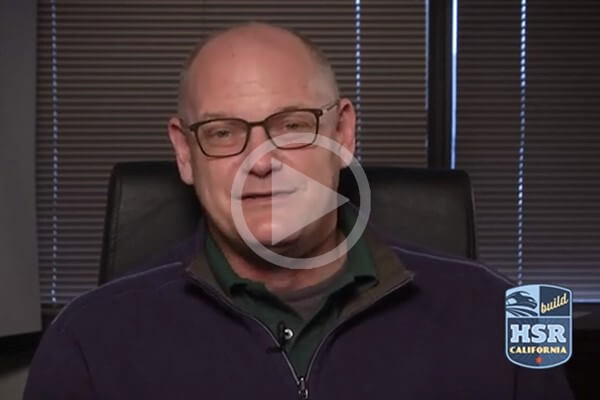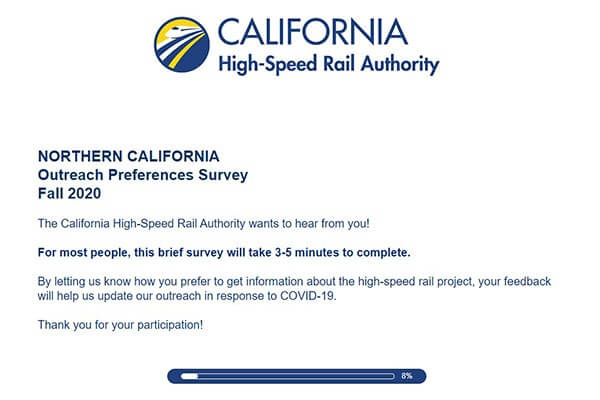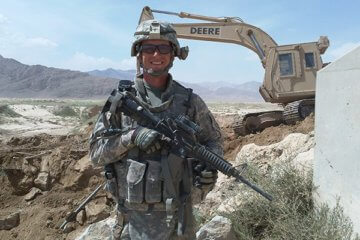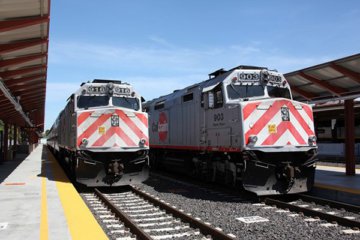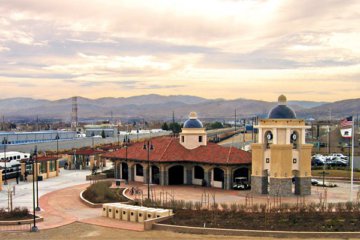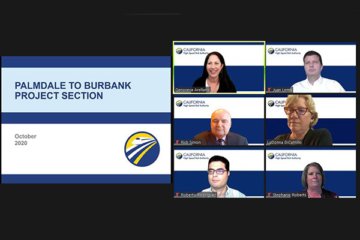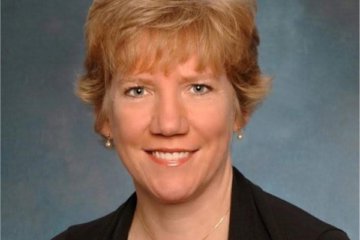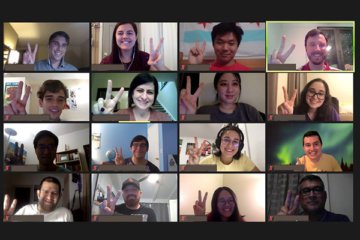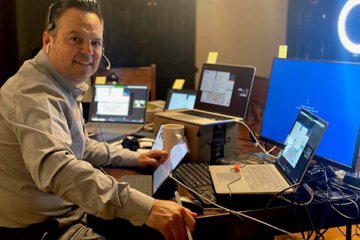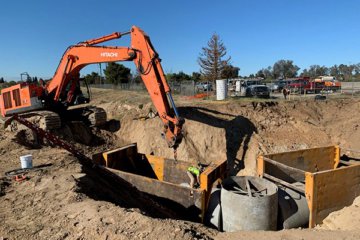Regional Newsletters
November 2020 Statewide Newsletter
A Message from the CEO
California High-Speed Rail Authority (Authority) CEO Brian Kelly discusses moving high-speed rail forward despite the challenges of COVID-19 amid the global pandemic. Even as logistical issues and other challenges complicate the work, Kelly highlights measurable progress, including advancing Central Valley construction and the project’s phase 1 environmental review from San Francisco to Los Angeles/Anaheim. From virtual town halls and workshops to the creation of good paying green jobs at a time of economic uncertainty, high-speed rail is happening, and the work has significantly expanded amid the pandemic. See the video at https://youtu.be/FvHVnk9n7II.
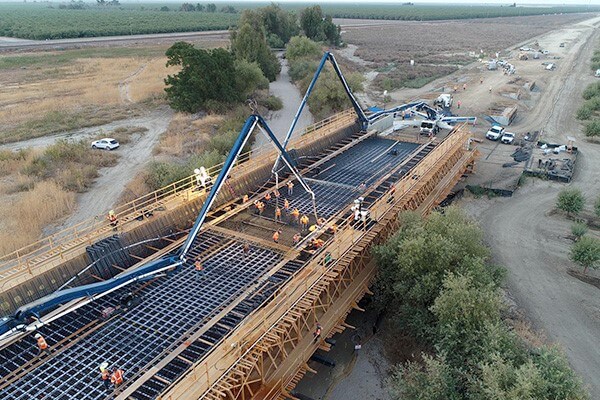
Five Structures in Three Months, 171 Miles from Merced to Bakersfield Environmentally Cleared!
High-speed rail is rising triumphant in California’s Central Valley. Five overcrossings and viaducts have been completed in the past three months.
The good news doesn’t stop there. The first high-speed rail structure has been completed in Kern County as crews finished the Poso Creek Viaduct in October. Located west of State Route 43 and north of the City of Wasco, it will carry high-speed rail trains over Poso Creek.
Last month in Fresno County, the Authority also announced the opening of the American Avenue overcrossing, allowing traffic to cross over the future high-speed rail and existing BNSF rail tracks. Since August, workers have also completed three overpasses in Madera County. Avenue 15, located between State Route 99 and Road 32, will take traffic over existing BNSF tracks and the future high-speed rail system. Not far away, cars and trucks will be able to use Avenue 10Opens in new window to cross over high-speed rail tracks, along with the Avenue 7 overpass which opened to traffic in October. These grade separations will prevent cars and trucks from idling and releasing greenhouse emissions while waiting on trains to pass.
By year’s end, two more structures are expected to be completed. The Garces Highway Viaduct at Garces Highway, located three miles west of State Route 43 in Kern County will take high-speed trains over traffic in the near future. The Avenue 12 overcrossing, located east of Madera Community College, is also expected to be completed and will reroute traffic over the future high-speed rail and existing rail lines.
Needless to say, it has been a busy few months with more than 1,100 construction workers dispatched each week, and a total of more than 4,700 jobs created since the project started!

I Will Ride Student Outreach Gets Back on Track
The California High-Speed Rail Authority (Authority) has relaunched I Will Ride, the student education and outreach initiative designed to inform, engage and connect college students to the high-speed rail program. Through the program, students and young professionals have the opportunity to attend construction tours, webinars and networking sessions with Authority staff.
I Will Ride is more than just a commitment to riding high-speed rail, it is an opportunity to meaningfully engage with colleges and universities to create pathways and opportunities for students. Learn more about the program in the new I Will Ride video.
COVID-19 has kept students away from each other and changed the way they socialize, learn and prepare for their careers. In the coming months, I Will Ride will help keep students safe while focusing on educational and networking events that can be held online in collaboration with colleges and universities.
The student-run initiative was started in the Central Valley by individuals who believed in the development of high-speed rail in California. Local I Will Ride chapters were established at several college campuses including UC Merced, Fresno State, Fresno City College and UC Berkeley. Since then, the Authority has welcomed hundreds of college and university students on construction tours in the Central Valley as part of I Will Ride Day and has engaged in numerous outreach events, including classroom presentations, workshops and connecting students to high-speed rail professionals.
Interested students should check out the Authority’s updated I Will Ride page to learn more.

Meet the Director of Environmental Services: Q & A with Serge Stanich
Serge Stanich has been appointed Director of Environmental Services for the California High-Speed Rail Authority (Authority). Prior to joining the Authority, Stanich worked as Senior Conservation Planner and Business Development Manager at Westervelt Ecological Services. He held several positions at WSP Global from 2015 to 2020, including Senior Permitting Manager and Program Director. In addition to holding several positions at HDR Inc. from 2014 to 2015 and from 2009 to 2013 including Business Class Leader of Environmental Sciences, Senior Permitting Scientist and Senior Planner, Stanich was Vice President of Operations and Senior Managing Scientist at Great Eastern Ecology from 2005 to 2009. He also held several positions at Jones and Stokes from 1997 to 2005, including Senior Scientist, Project Manager and Regulatory Compliance Team Leader.
Q: Tell us what you enjoy most about living and working in Sacramento.
A: I am a Sacramento native and have spent most of my life here from youth through studying biology and environmental studies at Sacramento State University. Sacramento has treated me very well over the years and while I have been fortunate to live elsewhere like Paris and New York, Sacramento keeps calling me back. I really enjoy the great balance of urban and open space and have been fortunate with the professional opportunities available in Sacramento. As the capital of the fifth largest economy and one of the most progressive states, it’s hard to find another place that puts such a priority on economic growth and promoting a healthy environment.
Q: What are some of your other interests outside work and how do you unwind?
A: I have a lot of hobbies, but I am probably most enthusiastic about fly-fishing. It requires a lot of focus and being very present in the moment for when the fish takes the fly. There is so much that is so peaceful and regenerative about a hike in the woods, a fresh mountain stream and being fully present in a moment of nature.
Also, before my wife and I had our first child two years ago, we were very passionate about animal welfare and routinely fostered small dogs for the Sacramento City Animal Shelter at Front Street. We both love taking a terrified stray from the shelter and transforming it into a member of a new family. When I find some free time again, I am sure we will get back to fostering.
Q: The Governor announced your appointment on November 3. Tell us a little more about your background and your approach for settling into the new job.
A: I am new to working with the Authority as a state employee, but I have been working with the California High-Speed Rail Program since 2015 when I started working with the environmental services group doing permitting for the Central Valley project sections. I’ve also been working in environmental consulting helping to provide environmental clearances for infrastructure projects since the mid-1990s.
This has been a hit the ground running at a full sprint type of situation. There are still six project sections with environmental documents in progress, construction and environmental compliance at full speed in the Central Valley, and potentially two more construction packages coming online to complete the lines from Merced to Bakersfield. Fortunately, we have a great team and a deep bench all working hard to help deliver the program. My role is to jump in and support the teams already doing great work to be even more successful.
Q: How would you describe your new role as Director of Environmental Services and what are your primary goals?
A: Environmental Services is just one team in a larger organization that is committed to the same goal: to provide a functioning high-speed rail program to the people of California. My role is to integrate the great people and the technical responsibilities within our division with the larger organization of the Authority as well as our regulatory agency partners and the public. Within my responsibilities to satisfy environmental laws, my goals will be to provide the Authority with a robust environmental protection program that serves the agency and the public, to partner with the regulatory agencies that oversee these laws to ensure that our project is compliant, and to deliver the program in a responsible, cost efficient and timely manner.
Q: What should Californians know about high-speed rail and why it’s important?
A: I don’t think I could work on another project that is as important and as transformative to California and the nation as high-speed rail. I am not against personal vehicles, but the benefits of high-speed rail are significant and the experience of travel is so incredibly luxurious that once high-speed rail is in place, people will be unable to imagine life without it and will wonder why it took so long. The U.S. has simply not kept pace with other modern nations on implementing this important next step for transportation and mobility. I’ve been fortunate to ride high-speed rail in Europe. It’s amazing to go from city-center to city-center in just a matter of a few hours with just simple luxury and grace. I’ve been with American friends for their first high-speed rail ride and the reaction is always the same: “Wow!”
Q: What do you see as the greatest challenges facing the project and how do you plan to help the Authority overcome them?
A: This is a big complex project and, due to the cost, it is controversial, especially in these times when investments need to be weighed against so many different important needs and priorities. There are lots of challenges but the ones that concern me the most are apathy and project fatigue. The apathy I see comes from people who don’t see this project as important. It’s hard to convince someone of the value of an investment if they have no chance to experience it. This is a tough project, and I think there are people in the public who have become weary of it and are ready to give up on it. The project has a lot of detractors and many people are prepared to kill it entirely or abandon elements of it. I will be working very hard to counter this apathy and fatigue and create a positive environment, to motivate people to achieve more, and to convince people internally and externally that this project is an important project that is worth achieving. Americans deserve high-speed rail and it’s long overdue.
Q: What career advice would you give to those looking for jobs in the environmental sciences and planning fields?
A: There is nothing more important than effective communication. The best science in the world is useless if it cannot be understood and embraced by the people that will be affected by it. For young people that are beginning their studies, be sure to have a solid basis in the sciences or engineering but also invest in written and oral presentation skills. For people looking for jobs in the environmental and planning fields, come prepared to work hard and embrace innovation. The future will continue to be bright and full of opportunity.
Quarterly Newsletter Archive
- Winter 2024 All Aboard Newsletter
- Fall 2023 All Aboard Newsletter
- Summer 2023 All Aboard Newsletter
- Spring 2023 All Aboard Newsletter
- Winter 2023 Quarterly Newsletter
- Fall 2022 Quarterly Newsletter
- Summer 2022 Quarterly Newsletter
- Spring 2022 Quarterly Newsletter
- Winter 2022 Quarterly Newsletter
- Fall 2021 Quarterly Newsletter
- Summer 2021 Quarterly Newsletter
- Regional Newsletter - May 2021
- Regional Newsletter - February 2021
- Regional Newsletter - November 2020
- Regional Newsletter - August 2020
- Regional Newsletter - June 2020
- Regional Newsletter - February 2020
- Regional Newsletter - November 2019
- Regional Newsletter - August 2019
- Fall 2023 All Aboard Quarterly Newsletter
- Summer 2023 All Aboard Quarterly Newsletter
- Winter 2022 Quarterly Newsletter
- Regional Newsletters – Nov 2019
- Regional Newsletters – Feb 2020
- Regional Newsletters – Aug 2020
- Regional Newsletters – June 2020
- Regional Newsletters – Aug 2019
- Winter 2024 All Aboard Quarterly Newsletter
- Spring 2023 All Aboard Quarterly Newsletter
- Winter 2023 Quarterly Newsletter
- Fall 2022 Quarterly Newsletter
- Summer 2022 Quarterly Newsletter
- Spring 2022 Quarterly Newsletter
- Fall 2021 Quarterly Newsletter
- Summer 2021 Quarterly Newsletter
- Regional Newsletters May 2021
- Regional Newsletters – Feb 2021
- Regional Newsletters – Nov 2020
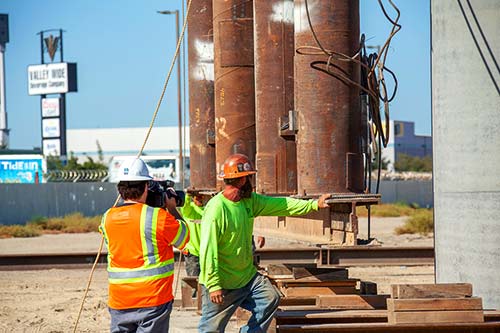
The California High-Speed Rail Authority makes every effort to ensure the website and its contents meet mandated ADA requirements as per the California State mandated Web Content Accessibility Guidelines 2.0 Level AA standard. If you are looking for a particular document not located on the California High-Speed Rail Authority website, you may make a request for the document under the Public Records Act through the Public Records Act page. If you have any questions about the website or its contents, please contact the Authority at info@hsr.ca.gov.


